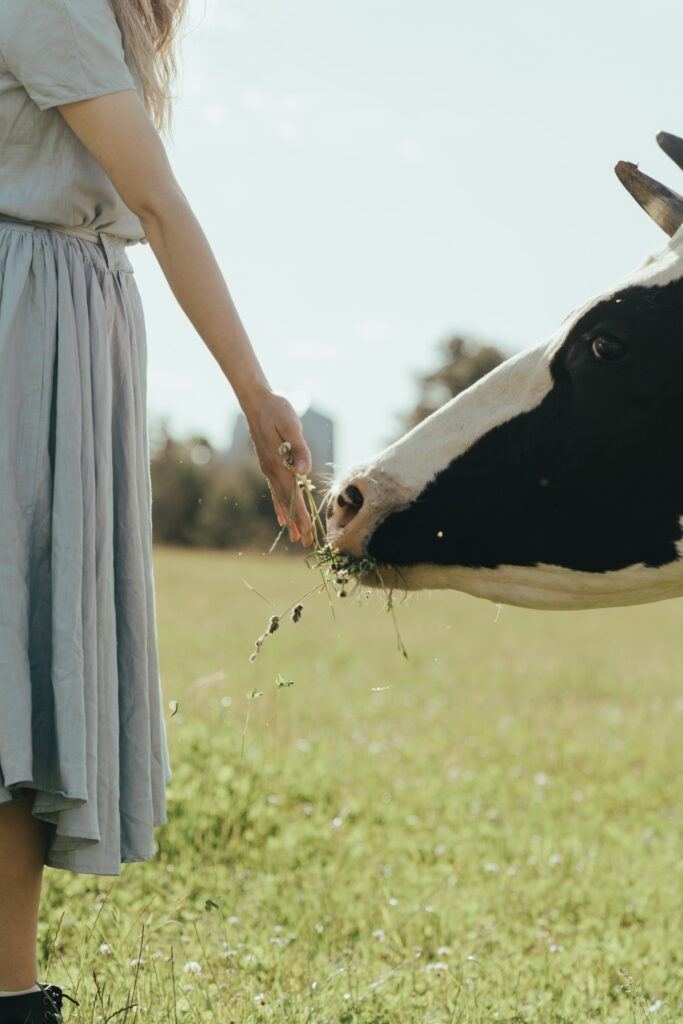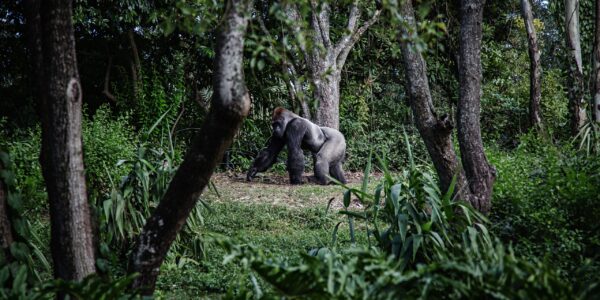The sustainability of livestock production has received considerable attention in recent years. Providing enough food, energy and protein for the growing population on Earth in a way that does not impact future generations is a massive challenge. One approach has been improving the efficiency of production systems, which includes making sure the animals do the most with the inputs provided. The animal microbiome plays a key role in this, as well as gut health in its broader context: animal nutrition, health and efficiency are all affected by gut health and the microbiome. As such, it is no surprise that the microbiome has become a useful target for products that seek to improve the sustainability of animal production, hoping to drive production and sustainability in tandem.
Improving production whilst securing sustainability fits perfectly in Huvepharma’s vision, as one of the global leaders in developing products to enhance nutrition as well as human and animal health. Wouter Van der Veken, Global Product Manager Feed Additives at Huvepharma, spoke to Thaer Al Keilani, Business Developer at BaseClear, about how research into the animal microbiome can improve sustainability without losing sight of productivity.
What is sustainable farming?

Global concerns such as population growth, climate change and farmland degradation pose a challenge for food production systems, now and into the future. The demand for animal-sourced food is expected to rise until 2050, and a considerable proportion of crop production will be directed towards animal feed. Sustainable farming practices endeavour to provide sufficient food and nutrition whilst preserving social, economic and environmental foundations for future generations.
There is an overlap between sustainability and profitability, and as such optimising for sustainability can also improve profitability – and vice versa. The types of required changes that are effective in improving both will depend on the type, size and location of the livestock production system used. For example, small-scale mixed livestock enterprises may lack the knowledge of larger producers, whilst larger producers might want to dive deeper into big data sets to identify areas for improvement. Regardless of these differences, there are also similarities: a feed additive will be effective regardless of whether it is supplemented to 5 or 50,000 animals.
Sustainability also needs to be considered throughout the value chain. Decisions about which animals and breeds to stock, housing, and proximity to feed and water impact the sustainability of any enterprise. Transportation needs to be considered, as well as waste during all steps in animal production. Last but not least, the type of enterprise and its size will also affect sustainability concerns. While feed efficiency is common to all industries, issues such as methane emission, antibiotic use and energy inputs will differ depending on whether poultry, ruminants or fish are being raised. For example, the requirement for feed protein in aquaculture is a major sustainability concern for this industry, whilst for ruminants it is likely that reducing methane emissions is higher on the priority list.
Read more about our methane metabolism Bioinformatics pipeline
 How can feed additives address sustainability concerns?
How can feed additives address sustainability concerns?
“In the animal feed industry, sustainable farming usually means doing more with less, without jeopardising future generations or the animals’ wellbeing”, explains Van der Veken. “A core concept is supporting animals’ gut health: animals with a healthy gut are the most productive, assuming there are no other challenges present. An animal with a healthy gut may thus have a lower feed conversion ratio, compared to an animal that is experiencing gut health issues or one that is not receiving supportive feed additives. As a result, the need for inputs such as feed is reduced whilst production is maintained or even improved. Therefore, animal gut health is crucial for sustainable animal production, whilst the link with animal wellbeing is self-explanatory”.
Keeping this in mind, it is not a surprise that feed and its formulation play a massive role in animal production. This also includes the use of feed additives, as they can help farmers get more out of their basic inputs whilst supporting animal health. As a consequence, both efficiency and sustainability can be improved with the aid of the right feed additive. “There are many feed additives available and the mode of action can differ greatly, even within the same category of feed additives”, says Van der Veken. Probiotics are a good example of this: per definition they are viable microorganisms which, when administered in adequate amounts, confer health benefits to the host (FAO/WHO, 2002). Their mode of action usually relates back to protecting the animal’s gut health, balancing the intestinal microbiota or supporting a proper functioning of the digestive tract. “However, how exactly this is achieved can differ greatly from probiotic to probiotic, and even from strain to strain”, elaborates Van der Veken.
Probiotics for sustainabile farming
 As probiotics offer the potential to improve gut health, there is a clear follow-on effect for sustainability. For example, a common condition in poultry that reduces wellbeing and profitability is necrotic enteritis. Caused by the opportunistic pathogen Clostridium perfringens, the condition often has its origins in a sub-clinical disbalance of the microbial balance (dysbacteriosis). Aggravated bacterial overgrowth of C. perfringens can then occur due to a wide array of triggers, including environmental stressors. If the bacteria break through the gut lining, inflammation of the digestive tract occurs, as well as the formation of necrotic lesions in the gut. This in turn reduces performance and can cause up to 50% mortality. Necrotic enteritis is not only a danger to production but also animal health and sustainability (see Van der Veken, 2021).
As probiotics offer the potential to improve gut health, there is a clear follow-on effect for sustainability. For example, a common condition in poultry that reduces wellbeing and profitability is necrotic enteritis. Caused by the opportunistic pathogen Clostridium perfringens, the condition often has its origins in a sub-clinical disbalance of the microbial balance (dysbacteriosis). Aggravated bacterial overgrowth of C. perfringens can then occur due to a wide array of triggers, including environmental stressors. If the bacteria break through the gut lining, inflammation of the digestive tract occurs, as well as the formation of necrotic lesions in the gut. This in turn reduces performance and can cause up to 50% mortality. Necrotic enteritis is not only a danger to production but also animal health and sustainability (see Van der Veken, 2021).
To support animals during production and mitigate both dysbacteriosis and necrotic enteritis, Huvepharma developed B-Act®. The product is based on a single probiotic strain and consists of spores of Bacillus licheniformis DSM 28710. Its mode of action is multifactorial, working on securing gut health from complementary directions: it balances the microbiota, produces antimicrobial compounds to compete with C. perfringens directly, and it enhances the immune system. As such, supplementing high-performing animals with B-Act® supports their technical performance, whilst C. perfringens challenges are met head-on. Together with a reduced mortality, these benefits fit in with the overall goal of combining production efficiency with sustainability, and highlights why probiotic feed additives have earned their place in modern feed formulation.
In terms of research into that microbiome with the aim of improving sustainability, the main challenge is ensuring that the correct method is applied for the research question. “The method itself needs to be robust and state-of-the-art, it needs to be cost-effective and return the results in a timely manner. And the way results are presented need to be translated to functional information, which in turn can potentially be linked to livestock health and performance parameters”, states Al Keilani.
Probiotic discovery and genomics technologies
To find, assess and develop effective microbial-based feed additives for use in animal production, microbial genomics play a major role. “At the start of the product development trajectory, researchers need to be clear about how their product works, as this will define what analyses are needed,” says Al Keilani. “A starting point for new product discovery is often the scientific literature or field observations, usually coupled with in silico screening of existing genome databanks for desirable traits. In recent years culturomics and metagenomics really opened up access to biobanks and microbial gene databases, unlocking a lot of information. This can be useful for in vitro or in silico screening of microbial strains or bioactives with desired properties”, clarifies Al Keilani. When moving to in vivo and in a complex environment such as the gut, techniques such as 16S profiling help to monitor microbiome modulation and link it to livestock health and performance outcomes. Simultaneously, the survival and colonisation of particular microbes can be tracked with more sensitive methods, like strain-specific qPCR assays. By doing so, the behaviour of probiotics or known pathogens in the gut can be characterised in the animal itself. “Last but not least, in addition to the desired efficacy parameters it is important to choose a strain that has a good safety and environmental profile for regulatory approval”, concludes Al Keilani.
What are the latest research directions and industry trends related to sustainable farming?
As both data generation and data interpretation tools are developing rapidly, there is a very clear trend towards more data-based decisions on-farm. This requires measuring as much as possible about the process as a starting point, but also brings novel challenges. “Being able to measure relevant parameters allows producers to understand, steer and ultimately improve the production process. The current mantra is that if you measure it, you know it – although there is still a massive challenge in correctly interpreting the generated data”, according to Van der Veken. A clear driver for both research as well as practical implementations are improvements in the accessibility of on-farm measurement tools, bridging the gap between lab and field. For example, the nutritional composition of animal feeds can be measured much more easily now with hand-held near infrared spectroscopy devices, allowing producers to check the quality of their feed ingredients almost instantly – and if needed, take action much more quickly.
Despite these improvements, certain complex systems maintain their inherent difficulties in how they can be measured, as well as how any results should be interpreted. The microbiome is good example of this, especially if the goal is to assess the microbiome status of a group of animals over time. As such, and despite novel developments within microbiome research, there is still some way to go before real-time on-farm data can be translated directly into a performance link.
“Livestock production is complex, and there is still a tendency to search for a “silver bullet” solution to improve performance by using a single product or measuring a single parameter. However, it is not a black-and-white situation: the complete management plan counts, from the feed to hygiene and genetics”, explains Van der Veken. “Animal performance depends on multiple factors, and as such an integrated approach is needed to work out what can be improved. Measuring relevant parameters can help to steer management, and as research continues will be much more straightforward in the future”.
Conclusions and the way forward
Sustainability has become more and more integrated in animal production processes. When done correctly, there is no need to compromise on efficiency. A holistic management approach is essential to help achieve this though, in which the importance of feed additives cannot be underestimated. To be able to select and develop the most effective additive, a proper evaluation method should be in place, and this is where modern research steps in. Especially for feed additives based on microbial components, modern omics technologies offer a wide array of tools to test, evaluate and assess novel microbial candidates. As these develop in the future, managing complex processes within the animal will become more and more accurate, ultimately leading to greater efficiency – whilst advancing sustainability as well.
Read more about our animal microbiome solutions
References
- Duarte ME, Sparks C, Kim SW. Modulation of jejunal mucosa-associated microbiota in relation to intestinal health and nutrient digestibility in pigs by supplementation of β-glucanase to corn soybean meal-based diets with xylanase. J Anim Sci. 2021 Jun 14:skab190. doi: 10.1093/jas/skab190.
- Food and Agriculture Organization/World Health Organization (FAO/WHO), 2002. Guidelines for the evaluation of probiotics in food. Food and Agriculture Organization of the United Nations and World Health Organization Working Group Report. Food and Agriculture Organization, Rome, Italy, 11 pp. Available at: https://tinyurl.com/y4guddsx.
- Van der Veken W, Hautekiet V, Kimminau EA, Hofacre C, Mathis GF (2021). Efficacy of probiotic Bacillus licheniformis DSM 28710 on performance and the mitigation of Clostridium perfringens-induced necrotic enteritis in broiler chickens. Journal of Applied Animal Nutrition (9):1, https://doi.org/10.3920/JAAN2020.0013
- Sustainable Food Systems Programme (2020). Towards a Common Understanding of Sustainable Food Systems: Key approaches, concepts and terms. https://www.oneplanetnetwork.org/resource/towards-common-understanding-sustainable-food-systems-key-approaches-concepts-and-terms
- Chapter 22 – Sustainable Livestock and Animal-Sourced Food. In: Campanhola C, Pandey S, editors. Sustainable Food and Agriculture: Academic Press; 2019. p. 225-32. https://doi.org/10.1016/B978-0-12-812134-4.00022-4
Related items


 How can feed additives address sustainability concerns?
How can feed additives address sustainability concerns? As probiotics offer the potential to improve gut health, there is a clear follow-on effect for sustainability. For example, a common condition in poultry that reduces wellbeing and profitability is necrotic enteritis. Caused by the opportunistic pathogen Clostridium perfringens, the condition often has its origins in a sub-clinical disbalance of the microbial balance (dysbacteriosis). Aggravated bacterial overgrowth of C. perfringens can then occur due to a wide array of triggers, including environmental stressors. If the bacteria break through the gut lining, inflammation of the digestive tract occurs, as well as the formation of necrotic lesions in the gut. This in turn reduces performance and can cause up to 50% mortality. Necrotic enteritis is not only a danger to production but also animal health and sustainability (see
As probiotics offer the potential to improve gut health, there is a clear follow-on effect for sustainability. For example, a common condition in poultry that reduces wellbeing and profitability is necrotic enteritis. Caused by the opportunistic pathogen Clostridium perfringens, the condition often has its origins in a sub-clinical disbalance of the microbial balance (dysbacteriosis). Aggravated bacterial overgrowth of C. perfringens can then occur due to a wide array of triggers, including environmental stressors. If the bacteria break through the gut lining, inflammation of the digestive tract occurs, as well as the formation of necrotic lesions in the gut. This in turn reduces performance and can cause up to 50% mortality. Necrotic enteritis is not only a danger to production but also animal health and sustainability (see 

